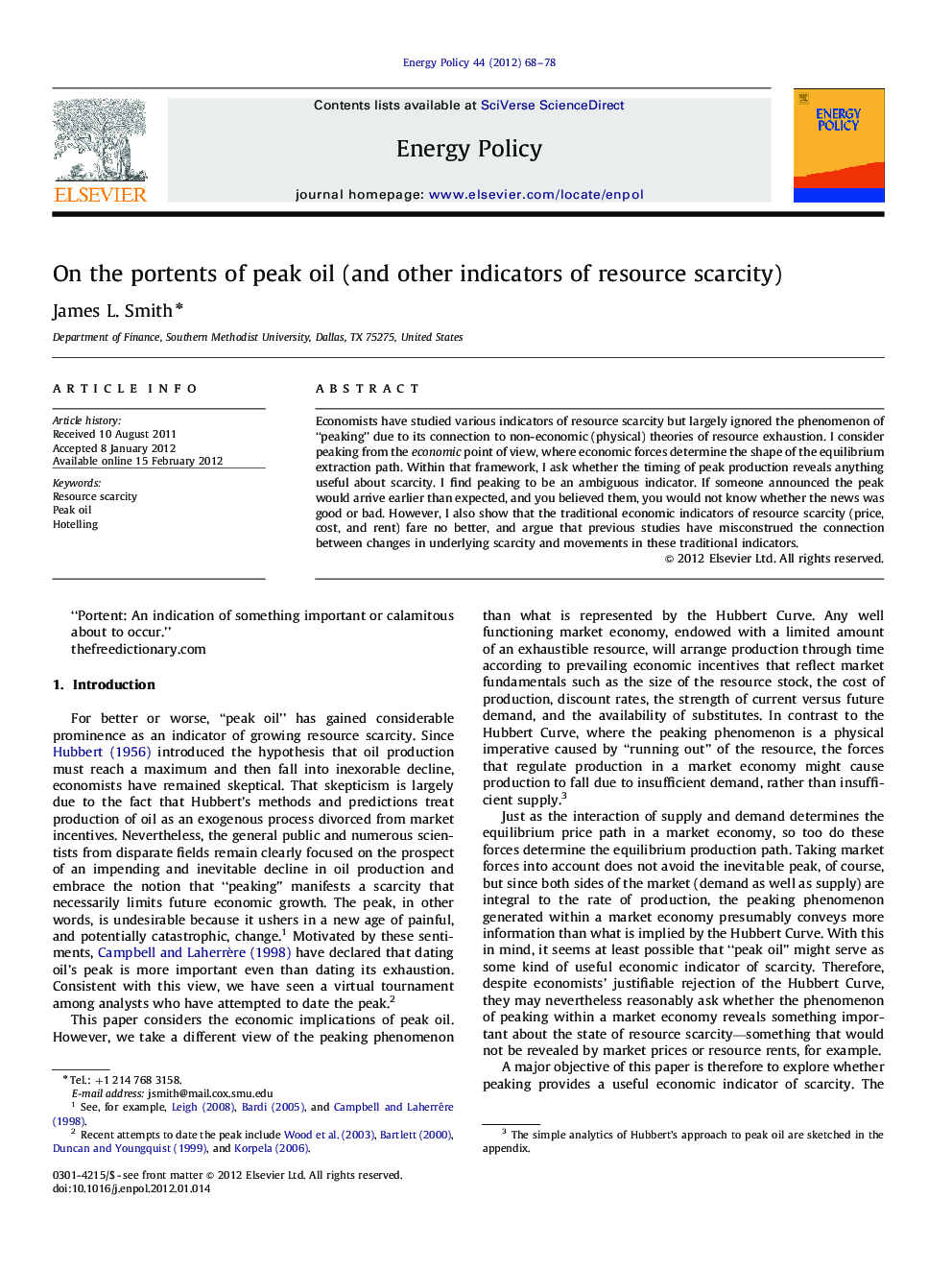| Article ID | Journal | Published Year | Pages | File Type |
|---|---|---|---|---|
| 995694 | Energy Policy | 2012 | 11 Pages |
Economists have studied various indicators of resource scarcity but largely ignored the phenomenon of “peaking” due to its connection to non-economic (physical) theories of resource exhaustion. I consider peaking from the economic point of view, where economic forces determine the shape of the equilibrium extraction path. Within that framework, I ask whether the timing of peak production reveals anything useful about scarcity. I find peaking to be an ambiguous indicator. If someone announced the peak would arrive earlier than expected, and you believed them, you would not know whether the news was good or bad. However, I also show that the traditional economic indicators of resource scarcity (price, cost, and rent) fare no better, and argue that previous studies have misconstrued the connection between changes in underlying scarcity and movements in these traditional indicators.
► We ask whether “peak oil” provides a useful economic indicator of scarcity. ► Timing of the peak follows Hotelling's model of inter-temporal equilibrium. ► The peak provides an ambiguous signal. ► Unexpectedly early peaking could be good news or bad. ► The traditional indicators (cost, price, and rent) do not fare much better.
